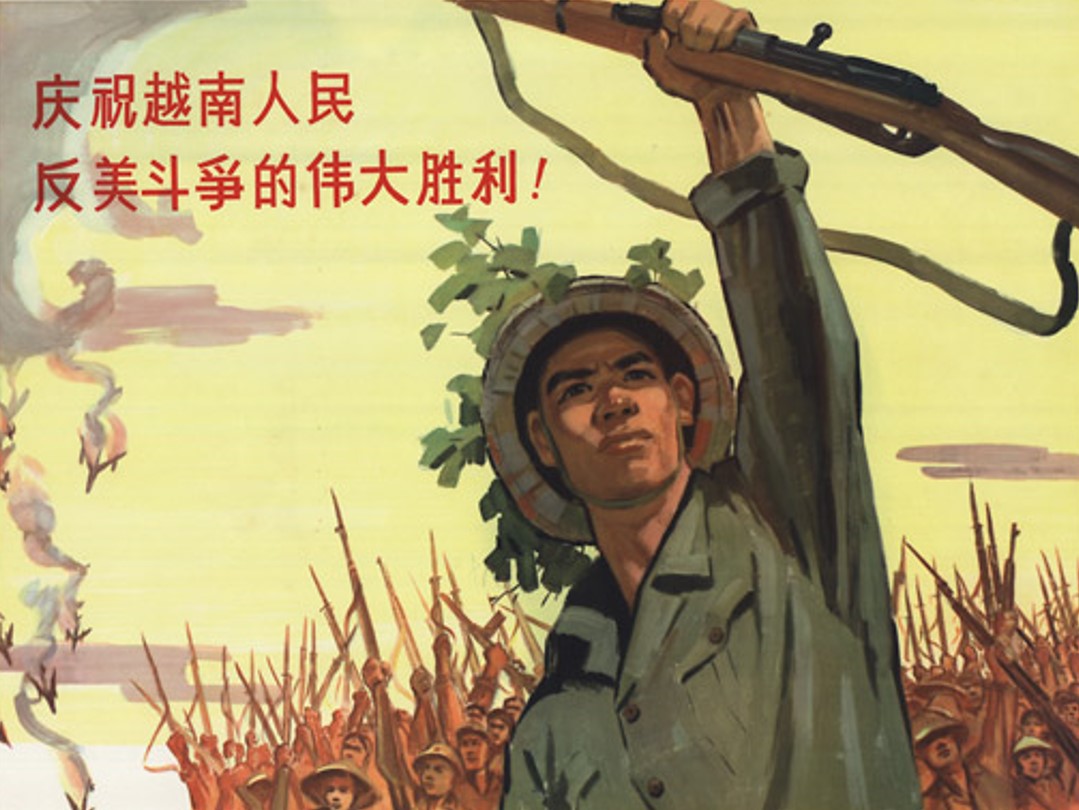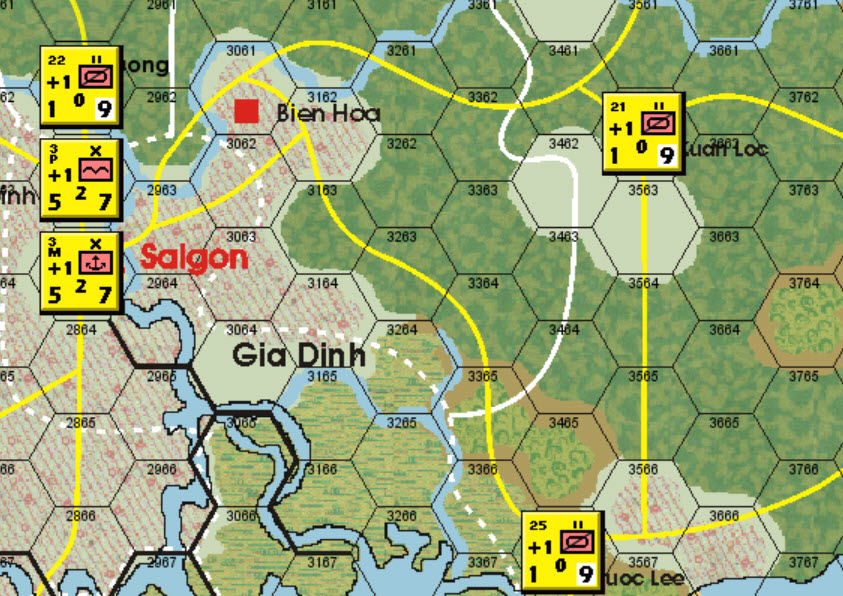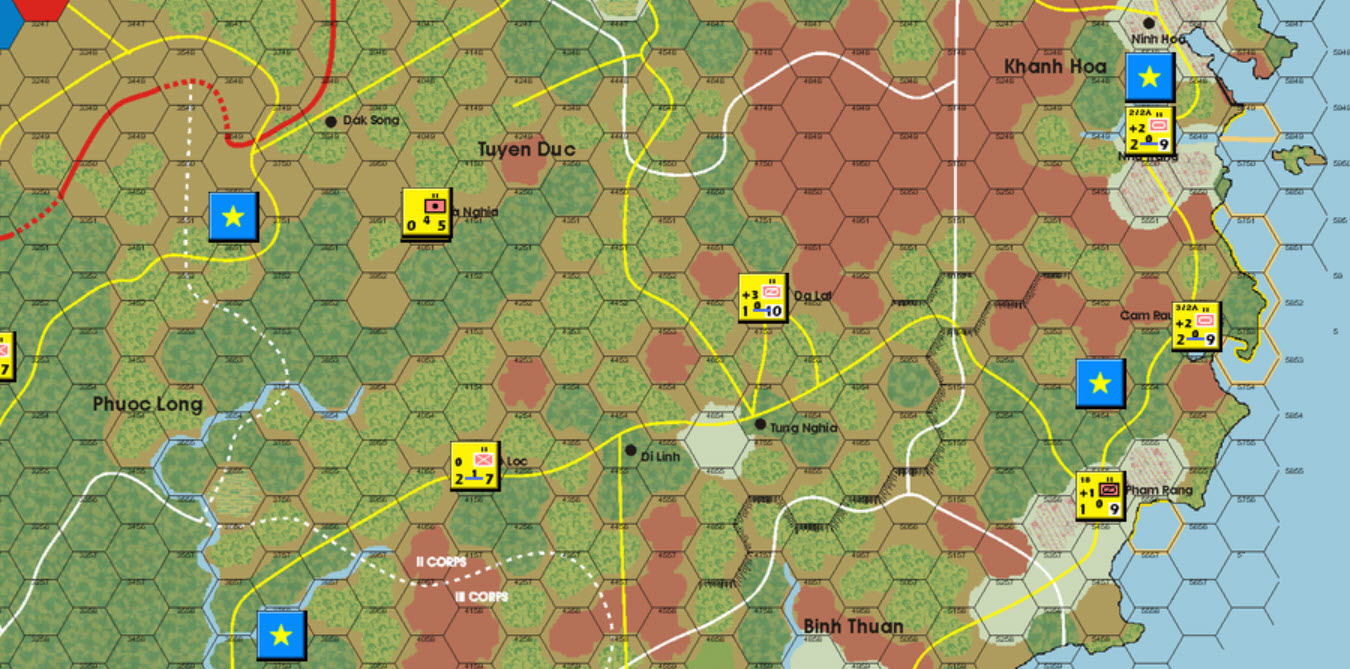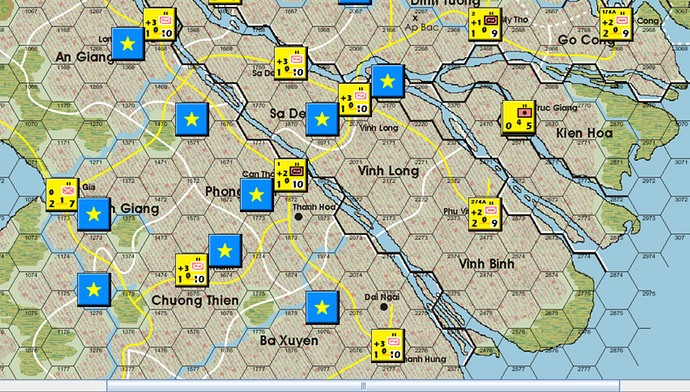Can I Get a Witness
Vietnam 1965-1975
1964 Pregame History, Point of Departure and Setup
“I love too hard, my friends sometimes say. But I believe, I believe, that a woman should be loved that way. But it hurts me so inside, to see her treat me so unkind. Somebody, somewhere tell her it’s unfair.”
Please hit play before reading and turn to the maximum volume your brain or household will allow.
Gaye, Marvin. “Can I Get a Witness.” , Tamla, September 20, 1963
Background

After the US-instigated coup which toppled the Diem Regime, unstable and isolated in the throes of the Buddhist Crisis, various military governments had come and gone as the Republic of South Vietnam spiraled into chaos and paralysis. This allowed the Viet Cong to make significant gains in the countryside and encouraging the hawkish faction of the Politburo in Hanoi to push hard, committing North Vietnamese Troops to South Vietnam and ordering an escalation in attacks by the Viet Cong Main Force elements in the South. The hope was that the unstable regime in the South could be toppled quickly, pre-empting any deeper involvement by the United States to save its ally, South Vietnam.
Simultaneous to the above, in 1964, with tensions high as a result of US Covert and Intelligence activities in North Vietnam, an attack on a US Destroyer conducting Electronic Surveillance in support of these activities had resulted in President Lyndon Baines Johnson securing a “blank check” from the US Congress, regarding the future use of military force in support of its South Vietnamese ally.
So South Vietnam is destabilizing in steps, the North Vietnamese are escalating and the President is running for reelection, and wants to appear strong on Foreign Policy, is aware that if South Vietnam is to survive, it will likely need greater US involvement. But he doesn’t want his Campaign haunted by the specter of committing US Ground Forces to aid South Vietnam.
Point of Departure
However, this time, 1964, with no war wider imminent, is where our point of departure in this Cardboard-created Alternate Reality occurs.
In 1964 President Lyndon Johnson had been offered four candidates to succeed Paul Harkins as Commander, U.S. Military Assistance Command, Vietnam. Besides Westmoreland, the others were Harold K. Johnson (assigned instead to be Army Chief of Staff), Creighton Abrams (who was made Vice Chief of Staff), and Bruce Palmer Jr. (posted as Deputy Chief of Staff for Military Operations).
—Sorley, Lewis. Westmoreland: The General Who Lost Vietnam . Houghton Mifflin Harcourt. 2011.
Westmoreland’s selection historically was no sure thing. He’d been thought by some to be the wrong man for the job, when selected.
Brigadier General Amos “Joe” Jordan made a valiant attempt to head off this appointment. He had heard that Westmoreland was being considered for the position. “I was so concerned about this that I went to the Secretary of the Army, Cy[rus] Vance,” he said. Jordan knew Vance well and felt that he could approach him on such a matter. He also knew Westmoreland well, having served at West Point as a permanent professor while Westmoreland was Superintendent. “I had extensive contact with him during those years,” Jordan told Secretary Vance, “and can tell you it would be a grave mistake to appoint him. He is spit and polish, two up and one back. This is a counterinsurgency war, and he would have no idea of how to deal with it.” Vance heard Jordan out, then replied, "Joe, you’re too late. We’ve already made the decision.”
—Sorley, Lewis. Westmoreland: The General Who Lost Vietnam . Houghton Mifflin Harcourt. 2011.
So here, General Abrams was selected as MACV Commander for 1964, while Westmoreland was elevated to Army Vice Chief of Staff. This will dictate a different approach when the crisis occurs, and the US must respond. To wit, what I choose to do now, during setups, and far more so when the game actually begins, and I must decide a commitment strategy for the US in Vietnam.
Setup
Take a breath, get a drink, and then please hit play before reading and turn to the maximum volume your brain or household will allow.
Owens, Buck. “I’ve Got a Tiger By the Tail.” , Capitol Records, December 1, 1964
So Abrams’ strategy in building the Army of the Republic of Vietnam (ARVN) is already starting to bear fruit, regarding how they will be constructed to complete my Setup. The way setup works is the Free World Allies (FWA- The Free World Military Forces, The United States and South Vietnam, aka Me) Player builds 100 South Vietnamese Supply Points’ worth of ARVN Forces and sets them up. Then I choose the ARVN Leaders.
Then the NLF Player (NVA and VC, Curt) then may place 90 VC Supply Points’ worth of VC units on the map along with four Political Sections (decoys, but they move, hurt Pacification and obstruct movement just like military units). He also gets a division of NVA troops that he may deploy on map anywhere in Laos or North Vietnam. This deployment of NVA regular formations is precipitating the crisis that will lead both sides to choose to escalate the war, by the way.
ARVN Setup
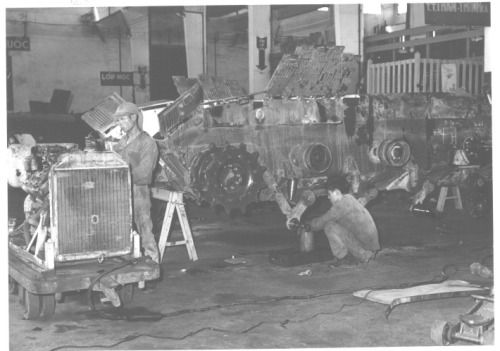
Available:
100 SVN Supply
217 SVN Manpower
Builds:
18 INF BNs Augmented (6M/12S/12S 24S Total)
11 DIV Armored CAV SQNs (11S/11S 22S Total)
6 Independent Armored CAV SQNs (6S/6S 12S Total)
12 Independent Armored BNs (12S/12S 24S Total)
1 Airborne Brigade (1M/2S)
1 Marine Brigade (1M/2S)
4 105mm Artillery BNs (16S)
4 Replacement Point (1M/2S)
Total Spent: 9M/100S
My concept already revolves around building a strong ARVN from the start. Historically, the US neglected ARVN training and equipment until after 1968, focusing on the US taking the lead in combat operations after the commitment of ground troops in 1965. Abrams, here in 1964 is trying to get the South Vietnamese ready to fight for their country. The US will help and try to stay involved as long as possible to aid in crisis situations, but the ARVN must shoulder a load from the beginning.
Having said that, 100 Supply is about enough to just cover the Provincial capitals and large cities, but here is no choice in that matter. So, I build 18 Independent Battalions, 12 Armor Battalions, six Independent Armored Cavalry Squadrons, and augmented them. Here’s an example of Augmented versus Augmented (the values are Combat, Arty, Movement). I also built four Independent Artillery Battalions (105s) to just make sure I could cover enough places/have a bit of firepower in some more remote capitals.
I also built exactly one element from each of the ARVN’s 11 Divisions, the cheapest from each (usually an Armored Cavalry Squadron and a Brigade in the case of the Paratrooper and Marine Divisions, respectively). And these are built Unagumented. Why?
The ARVN Training/Leadership Strategy
The ability of the ARVN to actually do things each Season is dependent upon the quality of the Corps and Divisional Leadership. We’ll go into more detail later, but the lower those numbers, the greater the chance that the nice ARVN units you built can’t do anything but sit around each season.
But buying any element of a Division allows the Divisional Commander to be placed. If he stinks, that unit can be withdrawn and rebuilt the next season. When withdrawn the leader goes away and when rebuilt a new leader is drawn. This can be time consuming, but it prevents you from throwing good money after bad. So, by doing this in setup, I get to see which leaders are worth building a full augmented division under.
So, what about those leaders? All are randomly chosen and a 2d6+2 is rolled for loyalty (to the regime…more on that later).
My “Three Star Leader” (Head of Government) Nguyễn Cao Kỳ is pulled. This is haunting. In the last 6 or 7 games he has been pulled EVERY DAMN TIME. And he was historically the Prime Minister of the Republic of Vietnam at this juncture. This is History teasing me. And haunting me. Ky gives a -2 to South Vietnamese Morale every Season and no effect on US Morale (more numbers we’ll talk about later).
Cao Văn Viên the Chief of Staff
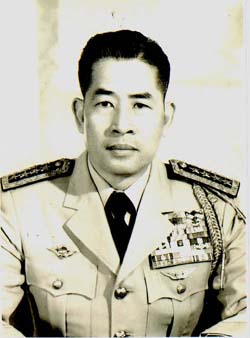
My Corps Leaders are a mixed bag. The Chief of Staff is great (important because he controls the Marine and Paratrooper Divisions as well as all ARVN Independent Artillery Units in Country). I and IV Corps leaders are good, which is where the greater amount of the population resides. II and III Corps leaders are atrocious. The Air Force and Navy Two Stars are there purely for regime Loyalty purposes when we see if a Coup happens in a season during the game.
Dư Quốc Đống the Parachute Division Commander

My Division Leaders are a mixed bag too. The 1st, 22nd thru 25th, and Marine and Paratrooper Division commanders are fine. The rest…”meh” to “uggh”. Divisional effectiveness each season is determined by rolling 1d6. If the number is equal to or below the Division Commander’s Effectiveness Rating + His Corps Commander’s rating, he can do stuff. If not, they are ineffective and can’t do much of anything. So, if I keep these divisions where they are, about Four have a shot of doing anything. As well, I and IV Corps give the best chance for any operations at present. So I’ll have to do a combination of moving some divisions around, standing some Divisions down and working to replace the II and III corps commanders. Easier said then done. But it’s starting to look like I want to expand efforts in the Delta and up in I Corps (where most of the population is) tread water and use the Chief of Staff’s Divisions in III Corps to make up for the bozo of a Commander there and stay defensive in II Corps; holding on to the populated Coastal areas and giving the rugged interior to the VC…for now.
And the NLF setup reinforces my pre-conceived notions. I have no Idea what The NLF built. They just show up as hidden VC Counters. So let’s look at the maps shall we?
I Corps, the Communist Challenge
The NLF have put a lot of Strength threatening I Corps to start. The 1st PAVN Division is in Con Thien, threatening to roll South into Quang Tri Province. And I will be weathering a storm here.
II Corps is bereft of many VC at present, but they are there, in the hard to reach Southern Part. The II/III Corps “Seam” is always an issue.
IV Corps, the other Communist Challenge
Again, the NLF has gone light in III Corps, relatively speaking, but has invested units in IV Corps. As have I.
He is heavy in the Delta, keep an eye here, this is where it will get hot, early.


